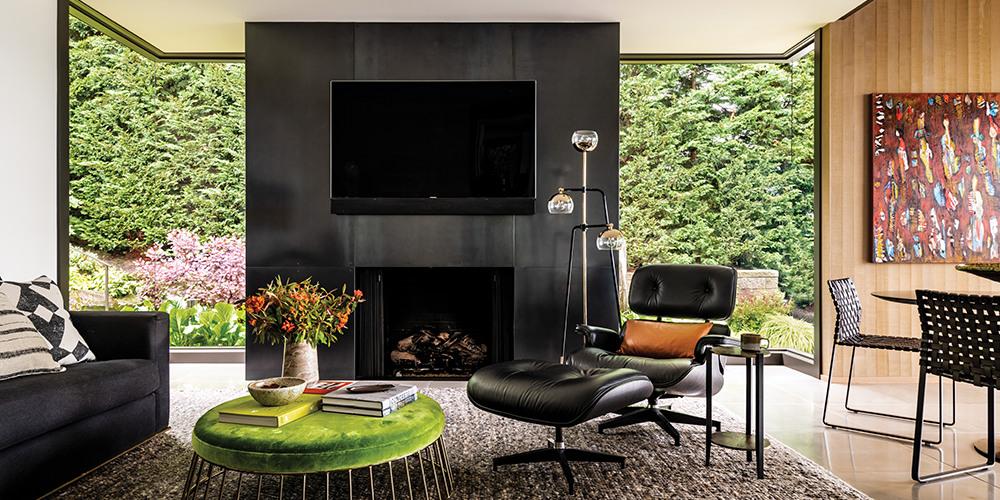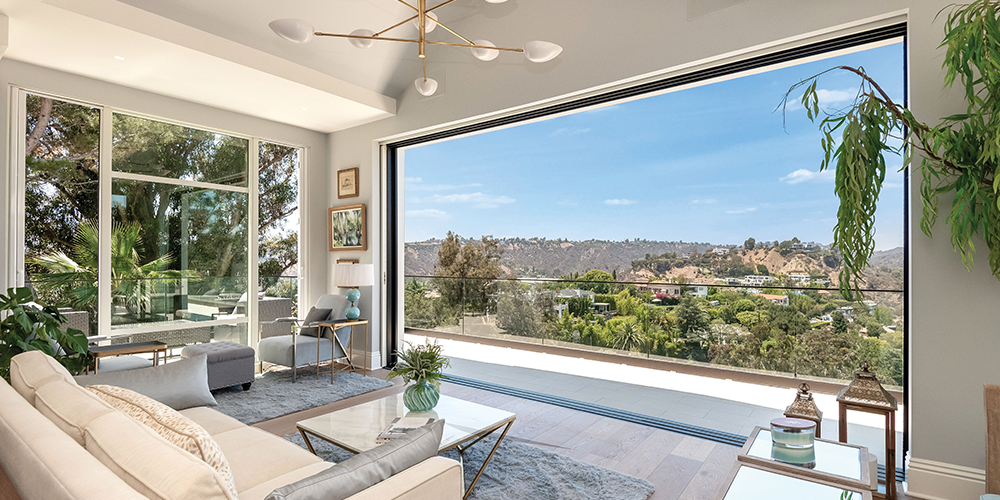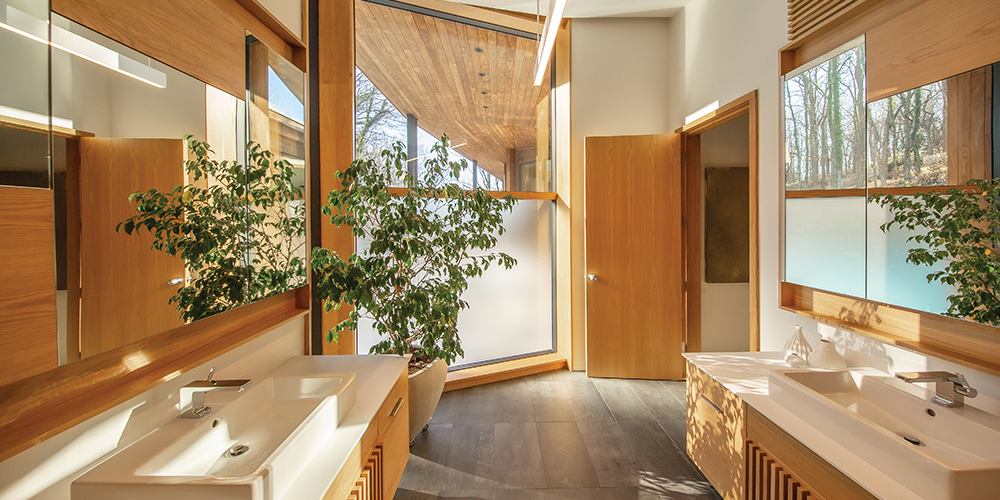“Biophilia” and “biophilic design” may sound like new terms peppering today’s design discussions about modern living, but the concepts themselves are intuitive and ancient. Biophilia describes our innate desire to connect to nature. It is an essential part of what makes us human. At our core, we are wired to feel enjoyment from nature due to our evolutionary dependence on it for survival and personal fulfillment. Biophilic design creates spaces that enhance our connection with nature – intrinsic to our comfort, health and wellbeing.
The earliest human dwellings were formed with natural materials and in harmony with the climate, solar patterns and seasonal shifts. Nature-inspired motifs adorned ancient places of worship and leadership, and were replicated within family homes. Renaissance-era fountains in European courtyards and Victorian conservatories allowed for year-round greenspace and natural light. Through the industrial revolution, fresh air and sunshine were prized for their healing benefits. In our globally interconnected digital age, we continue to create spaces that cultivate our deep-rooted need to be in touch with nature.
 [Source]
[Source]
More than just an aesthetic, biophilic design’s benefits are backed by empirical evidence. A scientific review found that maintaining visual connections to nature brings about a host of benefits, such as improving mood, increasing productivity and satisfaction, and promoting restorative sleep and healing. The research further indicates environments devoid of nature actually have a negative impact on health and quality of life.
When it comes to how we navigate our health and happiness in the modern world, architects and designers are the leading change agents and biophilia advocates. They can reconnect us to our natural environment and biological identity. Here are six biophilic design solutions to keep in mind when creating your ideal living space.
 [Source]
[Source]
Natural light and fresh air are ethereal, yet important biophilic solutions, especially for our most lived-in spaces. In biophilic design, light and air are not so much added to a space as they are let in from the outside with openings – namely, windows and doors.
Daylighting increases our visual comfort and can improve our circadian rhythms, benefiting our sleep during the night and alertness during the day. Natural ventilation can reduce the negative effects of indoor air pollution, moisture and odors.
To promote daylight and natural ventilation in your home, consider increasing the size and number of operable windows and doors. Pass-through windows and large folding or sliding doors can create unobstructed openings to the outside for maximum light and ventilation, and a fully connected indoor/outdoor environment.
 [Source]
[Source]
House plants are perhaps the most on-the-nose example of a biophilic element. Indoor plants are a proven, simple, direct solution for adding a natural aspect to a home. Vegetation helps oxygenate the room and make an indoor space more comfortable and inviting.
Because plants are limited by ideal light conditions, they often are concentrated around windows. To incorporate plants throughout your home, consider strategically positioning windows and doors to maximize natural light in every room. For example, adding clerestory windows at the top of a wall can draw daylight more deeply into the interior.
With increased vegetation throughout the home, you can attain a steady, consistent exposure to nature and continuously reap biophilia’s benefits.
 [Source]
[Source]
If you’ve ever napped next to a babbling brook or dozed on a beach, you know how soothing water can be. Viewing and hearing water is inherently calming. Some believe this connection starts in the womb and remains a vital resource throughout our evolution.
Whether on an ocean coastline, a lakeshore or a riverbed, homes near water can have strategically- positioned windows and doors to present optimal views. Thoughtfully incorporating operable windows helps create cross-ventilation, while allowing you to enjoy the sounds of lapping waves or a rushing river.
In the absence of natural bodies of water, biophilic design elements can be built to fit your available space and climate. Reflecting ponds, waterfalls, fountains and other water features within eyesight or earshot will enhance the calm, connected atmosphere in your home.
 [Source]
[Source]
Organic materials and colors are additional solutions in biophilic design’s ability to connect the built environment with our natural world. Natural colors, wood, stone and evolving metal finishes on interior and exterior components help integrate a home into the landscape.
Wood can provide warm colors and tactile grain patterns throughout your home’s surfaces, including on window and door frames, floors and furniture. Living finishes on metal surfaces like hardware age naturally and develop a dynamic coloration uniquely reflecting your home’s use and environment. Stone countertops, feature walls and floors offer a clear connection with the earth and convey a solid foundation. Earth tones, bluish-greens, and muted oranges and pinks ground our senses and subconsciously remind us of sky, leaves, fruits and flowers.
 [Source]
[Source]
A paradox of harnessing biophilic design solutions is that when we build or develop a new home, we are fundamentally enclosing space apart from the natural world. Architects and designers understand how to consider the environment and integrate your home to optimize the surrounding landscape.
Mapping the idiosyncrasies of your property’s topography allows your home to be nestled within the land, informing the house’s orientation, each elevation’s height and each room’s best layout. The placement of each window and door can be considered for premiere access to view your surroundings in response to nature’s changing moments.
 [Source]
[Source]
Imitation is the highest form of flattery. To make a home look like it truly does belong in the natural world, mimicking organic shapes and forms contributes to the atmospheric and tactile qualities of biophilic design solutions.
Nature celebrates curves, undulating shapes, and vine-like lines. Windows and doors can be crafted with round and half-round shapes, arches, ribbons, waveforms and nonlinear custom designs. Whether a single window or a unified whole-home concept, these options help reflect your individual style and your greater connection to the biological environment.
When your house truly represents nature – our ancestral living space – you will feel more at home.